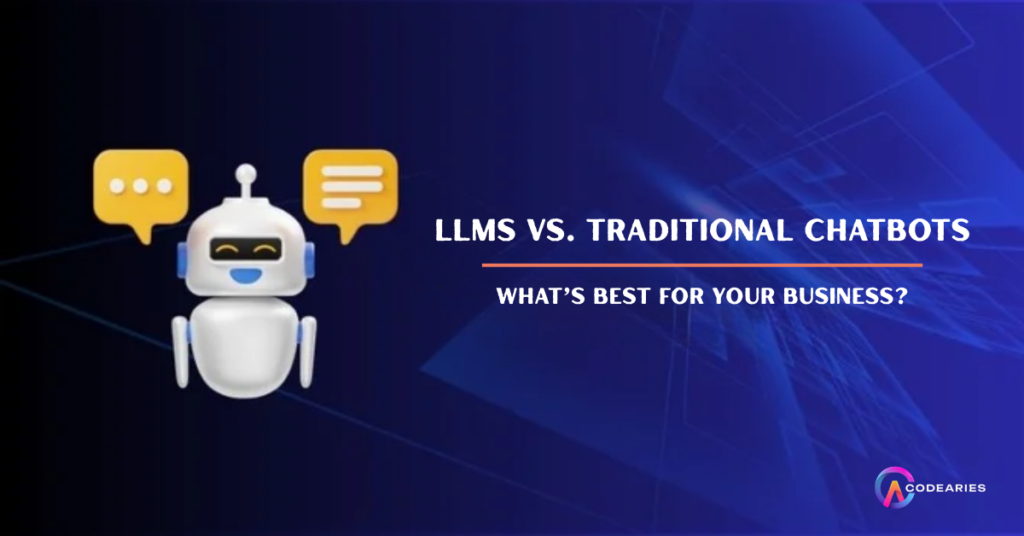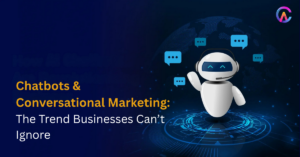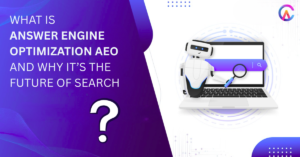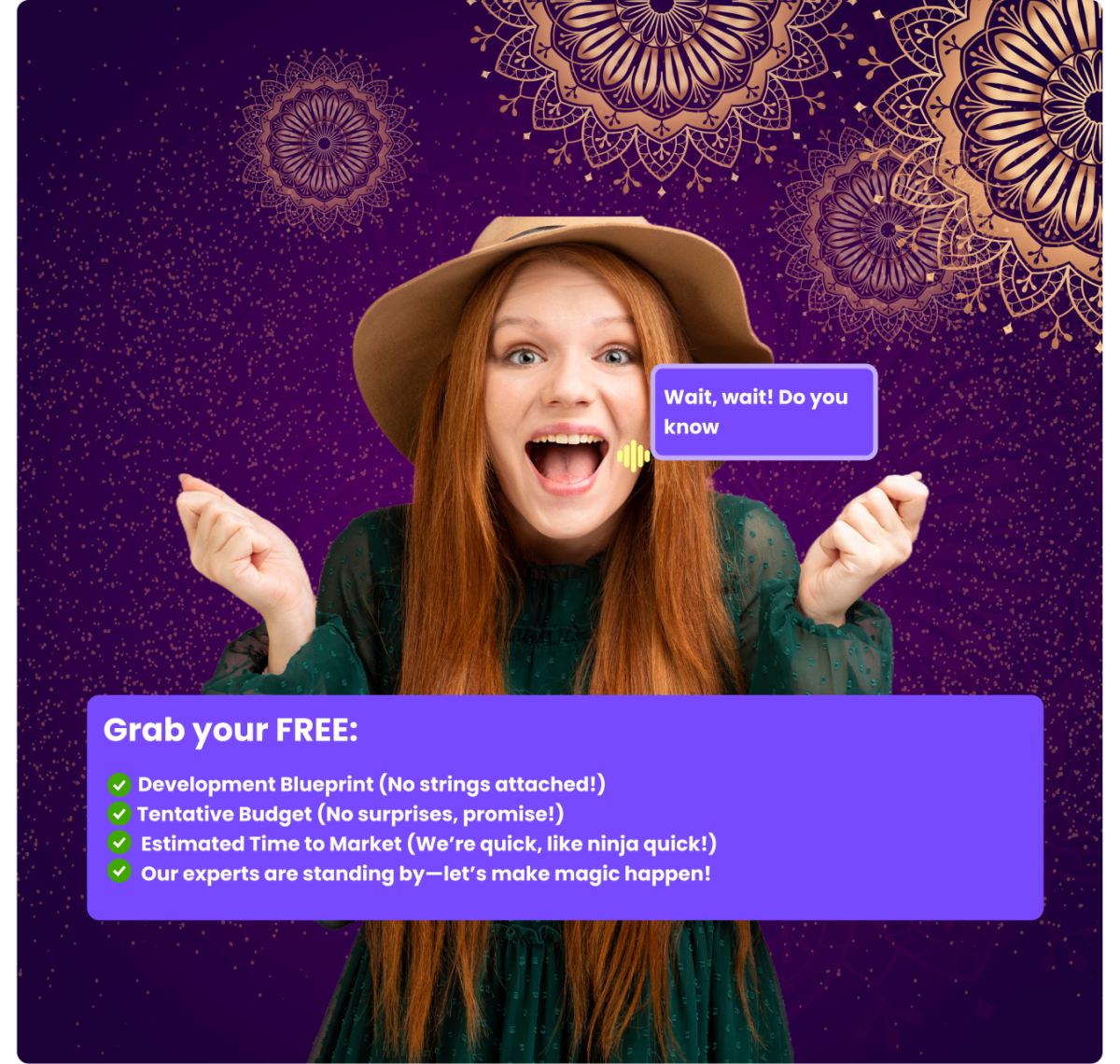Conversational AI is changing how businesses support customers, engage with them, and automate tasks. While chatbots have existed for years, Large Language Models (LLMs) like OpenAI’s GPT series, Google’s Gemini, and Meta’s Llama are creating a new approach to digital assistance. What are the key differences between LLMs and traditional chatbots? Which one aligns better with your business goals? How can a technology partner like Codearies help make your chatbot project successful?
This exploration looks at the differences, real-world uses, and business impacts of LLM-powered chatbots compared to traditional rule-based chatbots, helping you make the best choice for your digital future.
Understanding Traditional Chatbots
Traditional chatbots are built on scripts, rules, and sometimes basic machine learning. Typically, they rely on “if-then” logic, decision trees, or manual intent mapping. Early chatbots were useful for:
- Answering common FAQs
- Assisting with simple tasks (resetting a password, tracking an order)
- Gathering customer information for human support
Strengths:
- Reliable for repetitive, structured interactions
- Cost-effective to build for tightly defined tasks
- Lightweight and fast, often requiring little computational power
Limitations:
- Rigid and inflexible: They fail when questions deviate from their programmed flows.
- Limited context: Can’t remember past interactions or handle nuanced queries.
- Manual upkeep: Require ongoing development to update for new products or procedures.
- Low customer satisfaction due to robotic conversations that frustrate users who need more.
Traditional chatbots work well as long as users stick to the defined script. However, real conversations, which are often full of ambiguity and personality, can challenge these bots.
Enter LLMs: The Next Generation of Conversational AI
Large Language Models (LLMs) use extensive neural networks trained on vast datasets. They power today’s most advanced AI chat experiences, such as ChatGPT, Claude, Gemini, and enterprise-level solutions built on these frameworks.
What LLMs Bring to the Table:
- Natural Language Understanding:
LLMs grasp nuance, context, and tone, allowing them to handle open-ended questions and off-script conversations. - Contextual Memory:
They remember past exchanges and use this information to create coherent, context-aware responses, even in complex scenarios. - Personalization:
LLMs can adapt their responses based on a customer’s interaction history, leading to increased engagement. - Versatility:
They can be applied in customer support, marketing, research, IT troubleshooting, content creation, and language translation. - Continuous Learning:
LLM-based systems improve over time through feedback loops, automatically broadening their skill set. - Empathy and Tone Management:
LLMs can express sympathy and adjust their communication style for different audiences, enhancing the human-like quality of interactions.
Challenges:
- Greater computational resources (costly and less suited for resource-constrained environments)
- Potential for “hallucinations” (making things up if not properly controlled)
- May require domain-specific fine-tuning to avoid irrelevant responses and ensure alignment with business goals.
A Comparative Table: Traditional Chatbots vs. LLM-Powered Chatbots
| Feature | Traditional Chatbots | LLM-Powered Chatbots |
| Architecture | Rule-based, decision trees | Deep learning (transformers) |
| Training Data | Specific intents, small datasets | Massive, diverse data sources |
| Flexibility | Low—strictly script-driven | High—can handle open-ended queries |
| Contextual Understanding | Minimal, session-limited | Maintains conversation flow, remembers context |
| Response Quality | Fixed, robotic, repetitive | Dynamic, nuanced, conversational |
| Ease of Maintenance | Manual updates needed | Learns and adapts automatically |
| Scalability | Limited to programmed use cases | Suited for many applications |
| Cost (Deployment/Scaling) | Lower upfront, lower running costs | Higher due to compute needs |
| User Satisfaction | Lower—can frustrate users | Higher—enjoyable interactions |
| Domain Expertise | High if designed well for one use case | General knowledge, tunable for many |
Choosing What’s Right for Your Business
When to Choose a Traditional Chatbot
- Your queries are simple, repetitive, and well-defined
- You have a small user base or tight budget
- Domains where rules and compliance require strict controls
- Need for fast, lightweight deployment with limited infrastructure
When to Choose an LLM-Powered Chatbot
- Customer questions are unstructured, open-ended, and multi-turn
- You want to automate complex support, sales, or research
- Desire to scale across multiple languages and markets
- You seek higher user engagement and true conversational AI
- Your brand values innovation, responsiveness, and top-tier digital experience
Hybrid (“Best of Both Worlds”) Approaches
Some modern businesses use a hybrid model where simple queries are handled by a rule-based engine, escalating to an LLM when deeper context, creativity, or complexity is needed.
Practical Business Impacts
- Sales & Support: LLMs can upsell, cross-sell, and solve complex problems, boosting conversion and retention rates.
- Marketing: Generate product descriptions, blogs, and campaign content on demand.
- R&D/Operations: Summarize knowledge bases, find trends in feedback, or automate documentation.
- HR/Internal Support: Automate staff queries, onboarding, and ticket resolution, allowing human agents to focus on high-value tasks.
- Localization: Instantly support multiple languages, dialects, or region-specific content.
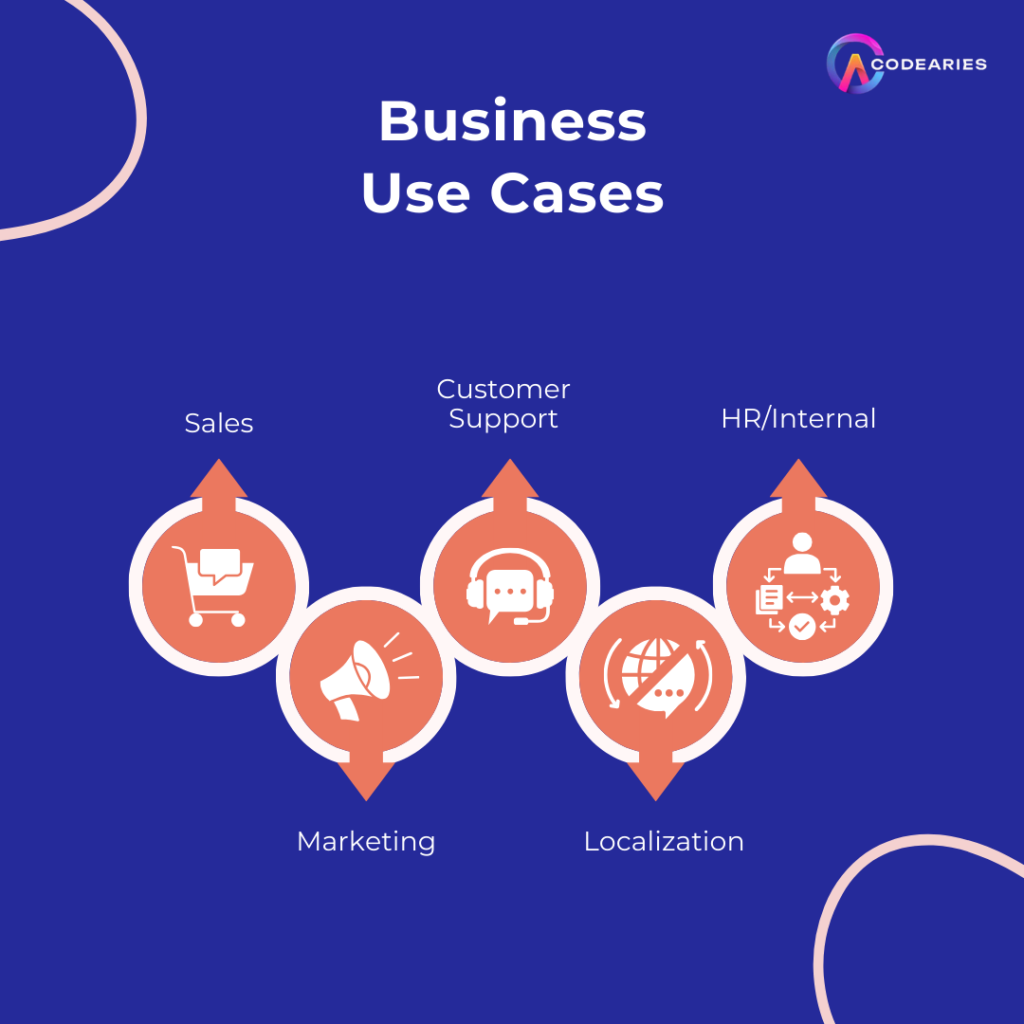
The Future: Evolving Chatbots with AI and LLMs
As generative AI matures, the line between traditional and LLM-driven chatbots will blur. Expect:
- Ongoing improvements in language quality and accuracy
- More secure, privacy-conscious models for sensitive industries
- Integration with enterprise data for real-time, domain-specific knowledge
- Better tools for tracking, explaining, and controlling AI-generated responses
The winners will be businesses combining cutting-edge tech with strong strategy, training, and user experience.
How Codearies Empowers Your Business with Advanced Chatbots
At Codearies, we focus on creating tailored conversational AI, offering everything from robust traditional chatbots to cutting-edge LLM-powered assistants for any industry and use case.
What We Provide:
- AI Strategy & Assessment
- Honest audit of your conversational needs: Traditional? LLM? Hybrid?
- ROI modeling, data privacy, and compliance insight.
- Custom Chatbot Development
- Omnichannel chatbot development: Web, mobile, social, and voice.
- Fine-tuning and prompt engineering for domain-specific LLMs.
- Seamless Integration
- Plug our chatbots into your CRM, ecommerce, website, helpdesk, or enterprise stack.
- User Experience & Design
- UX/UI optimized for engagement and conversion—across platforms and devices.
- Security & Compliance
- Audit workflows, incorporate privacy-by-design, and provide regulatory support for finance, health, trading, ecommerce, real estate, and more.
- Continuous Training & Optimization
- Implement feedback loops, analytics, and performance tuning to ensure your bots improve weekly.
- Education & Support
- Staff training, customer resources, and ongoing support for smooth operations at any scale.
With Codearies as your partner, you gain more than just a chatbot. You receive an intelligent, scalable, secure, and engaging conversational experience tailored to your brand and business needs.
Frequently Asked Questions (FAQ)
Can Codearies help us migrate from a traditional chatbot to an LLM-based solution?
Absolutely. We offer complete migration services, including retraining, fine-tuning, and integrating advanced AI into your current workflows for seamless continuity and measurable ROI.
How does Codearies fine-tune LLMs for our specific domain?
We utilize secure, proprietary data, advanced prompt engineering, and continuous monitoring to ensure models align with your business, language, compliance requirements, and customer expectations.
Are LLM-based chatbots safe for regulated industries (healthcare, finance, etc.)?
Yes. Codearies abides by strict security protocols, implements access controls, and follows industry regulations (GDPR, HIPAA, PCI-DSS) in every deployment.
Can we combine LLM capabilities with rule-based automation for efficiency?
Definitely. Our hybrid structures create efficiencies for common tasks while leveraging the deep understanding of LLMs for more complicated situations.
What post-launch support does Codearies provide?
We offer continuous monitoring, bug fixes, analytics, updates, improvements, and staff training on demand to keep your AI assistant effective and secure.

